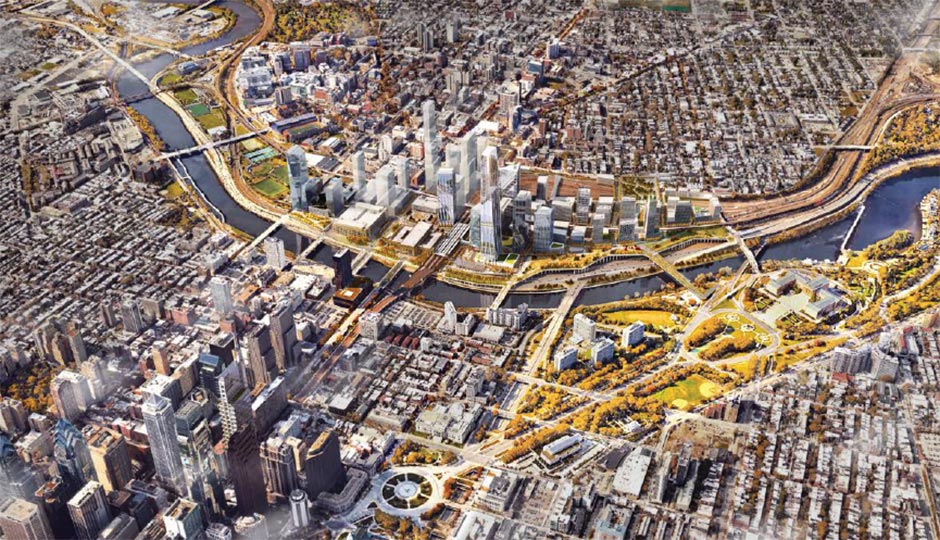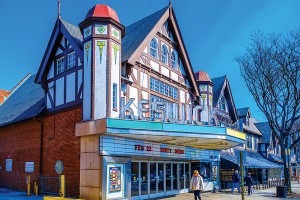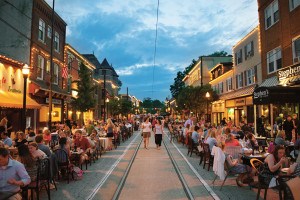Our Odds on the 30th Street Station Area Development Plan

The 30th Street Station area master plan laid out a fantastic vision of a second downtown for Philadelphia in University City. Only money stands in the way of realizing it, with the public sector as the weakest link. | Rendering by Skidmore, Owings & Merrill, courtesy Amtrak
$6.5 billion.
The figure was tossed out rather casually in the course of yesterday’s formal unveiling of the two-years-in-the-making master development plan for the area surrounding 30th Street Station in University City, but it represents the largest single bet yet placed on the future of Philadelphia.
The parties involved — Amtrak, Brandywine Realty Trust, Drexel University, PennDOT, SEPTA, and a slew of elected officials and community groups — have put their chips down on a project that has many moving parts and will play out over the course of decades.
As we’ve seen plans almost as ambitious as this one go up in smoke (anyone here remember River City?), it’s only logical that we should ask what its chances for completion are. Herewith are my own odds for the plan’s key components and the overall chances that the plan will be fully realized sometime in our or our children’s lifetimes.
Concourse connecting the subway and train stations
This was something the community groups who weighed in on the plan as it was being drafted identified as a top priority. There used to be an underground connection between the two stations, but it was closed in the late 1970s out of safety concerns. The conceptual rendering shows something much more appealing than the cramped tunnel that was closed, and SEPTA is already at work on the engineering part of this project. This is among the lowest of the low-hanging fruit associated with the plan. 1:8 odds.
New and reopened concourses within 30th Street Station
The work required to reopen the 29th Street mezzanine beneath the suburban train platforms and add a new north-side concourse along the station’s Arch Street side is minimal, and it’s all within Amtrak’s jurisdiction. The additional space will enable the station to better handle increased regional traffic if and when SEPTA and/or NJ Transit get around to providing it. 1:10 odds.
Expanded and enlarged public plazas
Again, it won’t take that much heavy lifting to expand The Porch on the station’s south side and add new pedestrian plazas on the other sides of the stations. The one logistical issue, car and taxi pickup and dropoff, can be handled using the east station portal and planned north concourse. This part of the plan promises a quick payoff in improvements to the public realm outside the station, and once again, it’s something Amtrak can do without having to wait on anyone else. 1:10 odds.
New intermodal bus terminal on Arch Street
From a transportation perspective, this is the most useful of the proposed improvements, as it would bring all intercity ground transportation together in one convenient location (as well as get Bolt Bus and Megabus riders out of the rain and cold). But pulling this off will be a little trickier, as it’s slated to go in a constrained location between the Cira Centre and the ramps to and from I-76 and I-676. This means PennDOT will have to reconfigure the ramps to make some space and minimize traffic snarls. As the ramps themselves are in an equally tight space, this could end up inconveniencing drivers, bus riders or both as everyone tries to shoehorn everything in. But PennDOT managed to rebuild the equally tight I-76/I-676 junction so that it functions (more or less) smoothly, so this is far from impossible, as long as it can get the money for the job. 1:1 odds unless PennDOT’s feasibility study comes back with a high price tag for the work.
The new neighborhood and riverside promenades north of the station
This is the most expensive and the most ambitious part of the plan, and the part that will take the longest to materialize. What it has going for it is the expertise of the two private-sector parties to this plan, Drexel University and Brandywine Realty Trust; both have demonstrated skill and expertise at putting together long-range development proposals and keeping their eyes on the ball over the long haul. But there will need to be some public funds committed to preparing the site for the new construction, and there will be plenty of paperwork needed to clear the way for that construction. The certainty of all those things happening is not that great in the near term, or maybe even in the medium term (5-10 years). But if Drexel and Brandywine can wait things out, they might come to pass by the time their Schuylkill Yards “down payment” has been made. 3:1 odds.
Overall likelihood everything will fall into place
This plan has something going for it River City didn’t: Buy-in from everyone who has a stake in realizing it, including the community and elected officials. The biggest fly in the ointment is the $2 billion total tab for the public commitment. Amtrak might be able to pay for all the projects it wants to complete at 30th Street Station itself, but it also has some bigger fish it wants to fry, including unclogging Penn Station up the road, rebuilding and expanding the damaged tunnels under the Hudson River and building a high-speed rail line to supplement the existing Northeast Corridor. The intervention of elected officials will probably be necessary to find the public money needed, which will add years to the timeline. Which is also why there wasn’t talk of a timeline at yesterday’s announcement. Besides, if the economic or political winds shift, all of this could be knocked into a cocked hat. 3:1 odds.
Follow Sandy Smith on Twitter.


